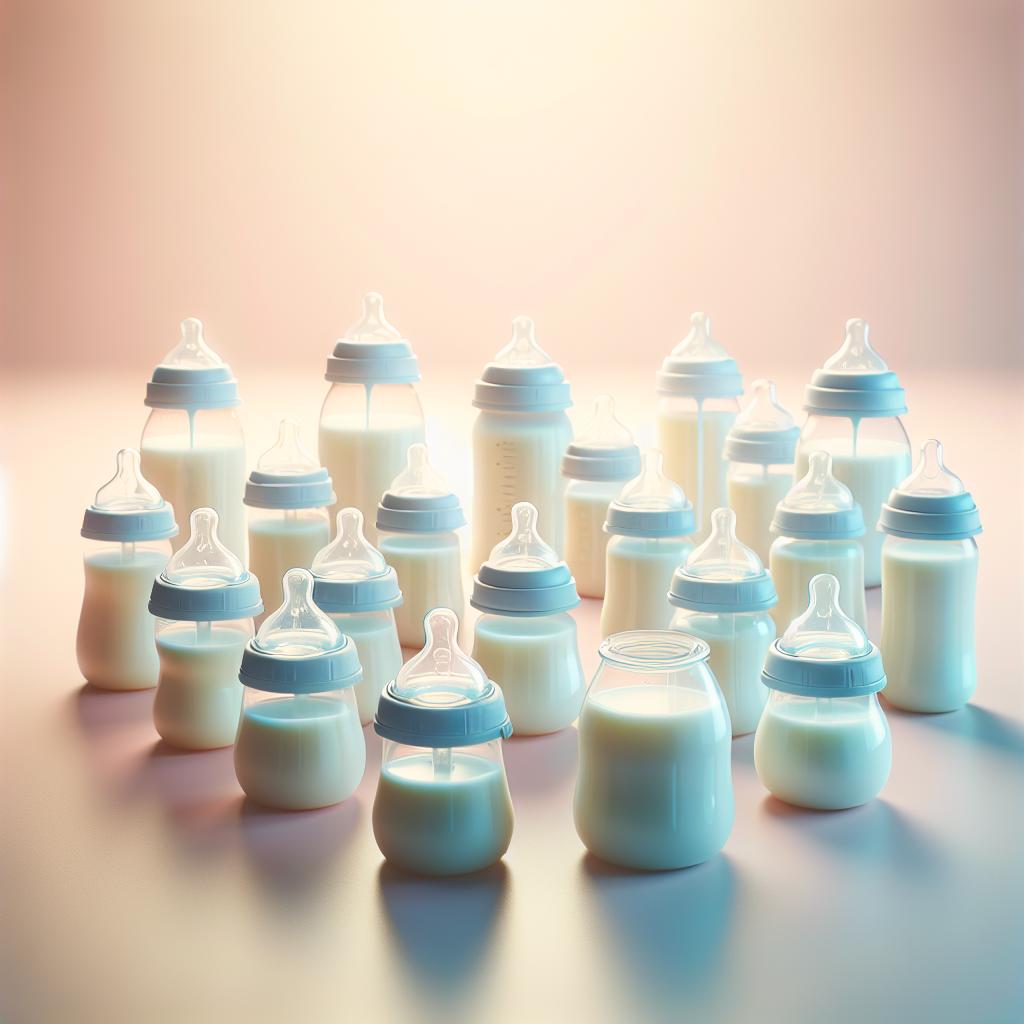Unraveling the Challenges of Comforting Baby During Bottle Feeding
Recognizing the Signs of Baby Discomfort
Before diving into the methods of soothing your baby during bottle feeding, it’s crucial to recognize the signs indicating that your little one is experiencing discomfort. This could be due to a variety of reasons, including colic, feeding too rapidly, gas, or even the transition from breast to bottle. Here are some common signs to watch out for:
- Fussiness during or after feeding
- Squirming or arching of the back
- Frequent crying or screaming
- Rejecting the bottle
Wondering what could possibly cause these symptoms during feeding? Find out more about why babies cry during bottle feeding.
Strategies to Comfort Your Baby During Bottle Feeding
Now that you’ve identified some of the signs of discomfort, the question that arises is – How can I make bottle feeding a more enjoyable experience for my baby? The secret lies in implementing a soothing bottle feeding routine. Below, we’ve compiled some strategies that may help comfort your baby during bottle feeding.
Implementing a Hybrid Feeding Method
The transition from breast to bottle feeding can be a challenging phase for both the baby and the mother. It is often accompanied by the baby rejecting the bottle, leading to feeding discomfort. A possible solution is to implement a hybrid method of feeding – where both breastfeeding and bottle feeding are combined. This method provides the baby with the comfort of the mother’s presence and warmth while gradually introducing the feel of a bottle.
Offering Comfort Nursing
Comfort nursing is a technique where the mother allows the baby to nurse for comfort, rather than for nourishment. This skin-to-skin contact can be a powerful way to soothe a fussy baby. It helps the baby feel safe and secure, promoting bonding and reducing stress. For mothers who can’t nurse, cuddling the baby close while bottle feeding can have a similar effect. Read more about comfort nursing.
Correcting Bottle Feeding Positions
One may tend to overlook the significance of holding the baby properly while bottle feeding. An incorrect feeding position can result in feeding irritations such as gas or swallowing air. Ensure your baby’s head is slightly higher than their body and the bottle is angled so that no air is present in the nipple. This position promotes comfortable swallowing and minimizes the ingestion of air. For more tips on correct bottle feeding techniques, especially while traveling, read here.
Remember, every baby is unique and what works for one might not work for another. Be patient and try different soothing techniques until you find what works best for your little one. Stay tuned for more on comforting baby bottle feeding.
Introducing Soothing Techniques
Incorporating soothing techniques such as rocking, singing, or even using a pacifier can effectively comfort your baby during bottle feeding. The gentle rocking motion can coax your baby to relax and focus on feeding. Singing or humming a calming nursery rhyme can increase your baby’s sense of security. Additionally, studies have shown that pacifiers can reduce the risk of sudden infant death syndrome (SIDS) and provide a much-needed source of comfort [Source].
Adapting the Feeding Environment
Your baby’s feeding environment can play a huge role in comfort level. The environment should ideally be quiet, calming, and free of distractions. Lights should be dimmed, excessive noise minimized, and distractions like toys or screens should be kept at bay. Such an environment encourages a focus on feeding and can help in building a comfortable feeding routine.
Importance of Burping
Burping your baby is an extremely important part of the feeding process. It helps remove trapped air swallowed by the baby during feeding, which can cause discomfort and gas. Different methods, such as over the shoulder, on your lap, and face down on your lap, can be used. You can experiment to see which method works best for your baby.
Bottle and Nipple Selection
Just as important as feeding techniques and environment is the selection of the right bottle and nipple. The nipple’s flow rate, shape, and material all affect the baby’s feeding experience and comfort level. Choosing a bottle and nipple that suits your baby’s feeding style and preference can help minimize feeding discomforts. Find out more about choosing the right nipple and bottle here.
On-Demand Feeding
Babies, especially newborns, should be fed on demand, that is, whenever they show signs of hunger. This could mean frequent feedings at the start, but it allows the baby to control the feeding pace and quantity, reducing the chance of overeating and subsequent discomfort. More on-demand feeding available here.
When to Seek Professional Help
While the techniques can alleviate feeding discomfort, persistent feeding issues should be addressed by a healthcare provider. Frequent vomiting, trouble gaining weight, and continuous fussiness are signs that warrant professional attention. Don’t hesitate to reach out to a healthcare provider for any feeding concerns you may have. More information available on when to seek help can be found on WebMD.
Patience, observation, and a little trial-and-error are key to tackling feeding discomforts. Experiment with various strategies and find what soothes your baby most effectively. It’s important to remember that all babies are different and what might work for one may not for another. Happy feeding!
References
For additional tips and information related to comforting a baby during bottle feeding, you may want to look at:
• The NHS guide on Breastfeeding: Your Questions Answered
• The NHS guide on How to Stop Breastfeeding






